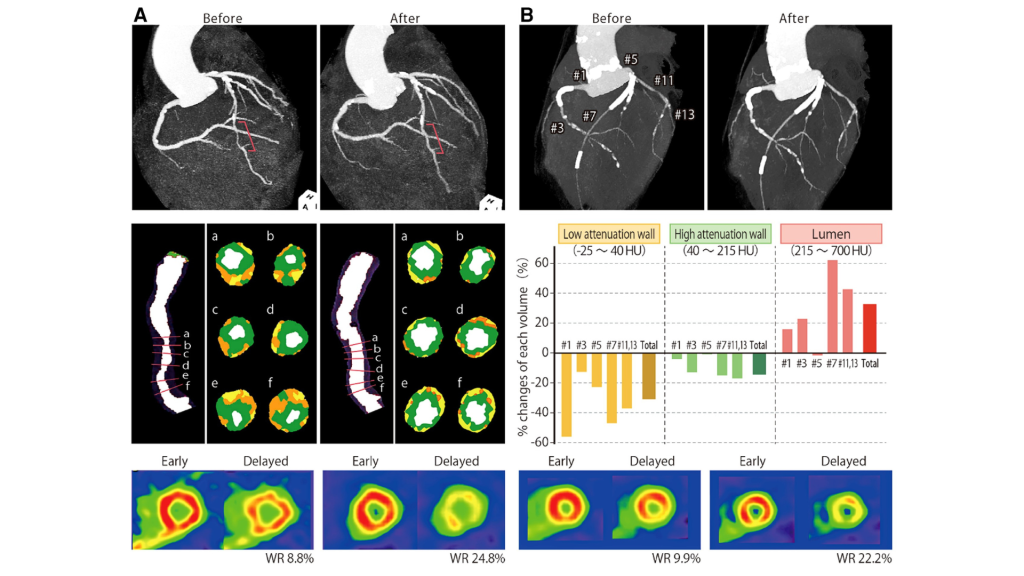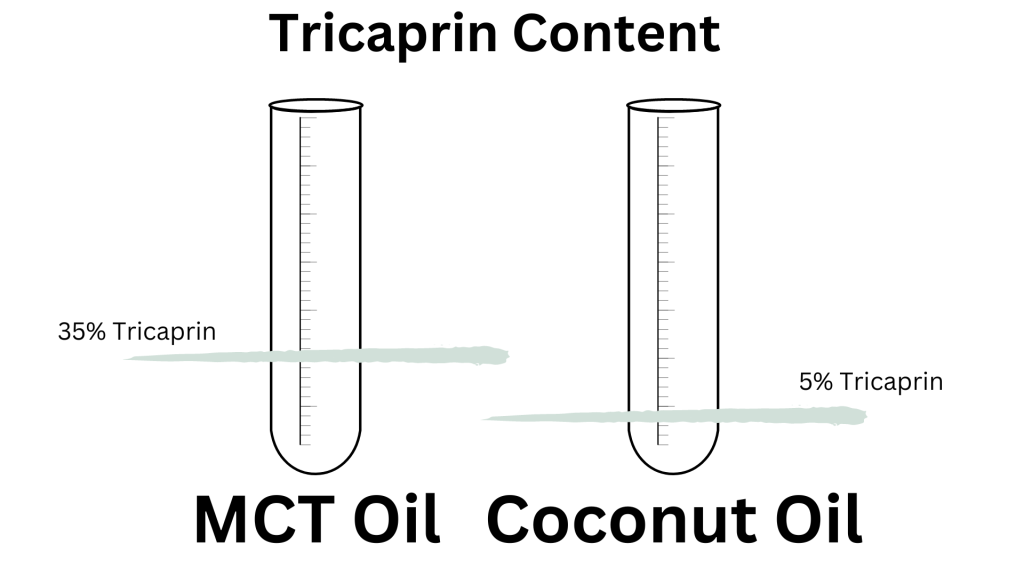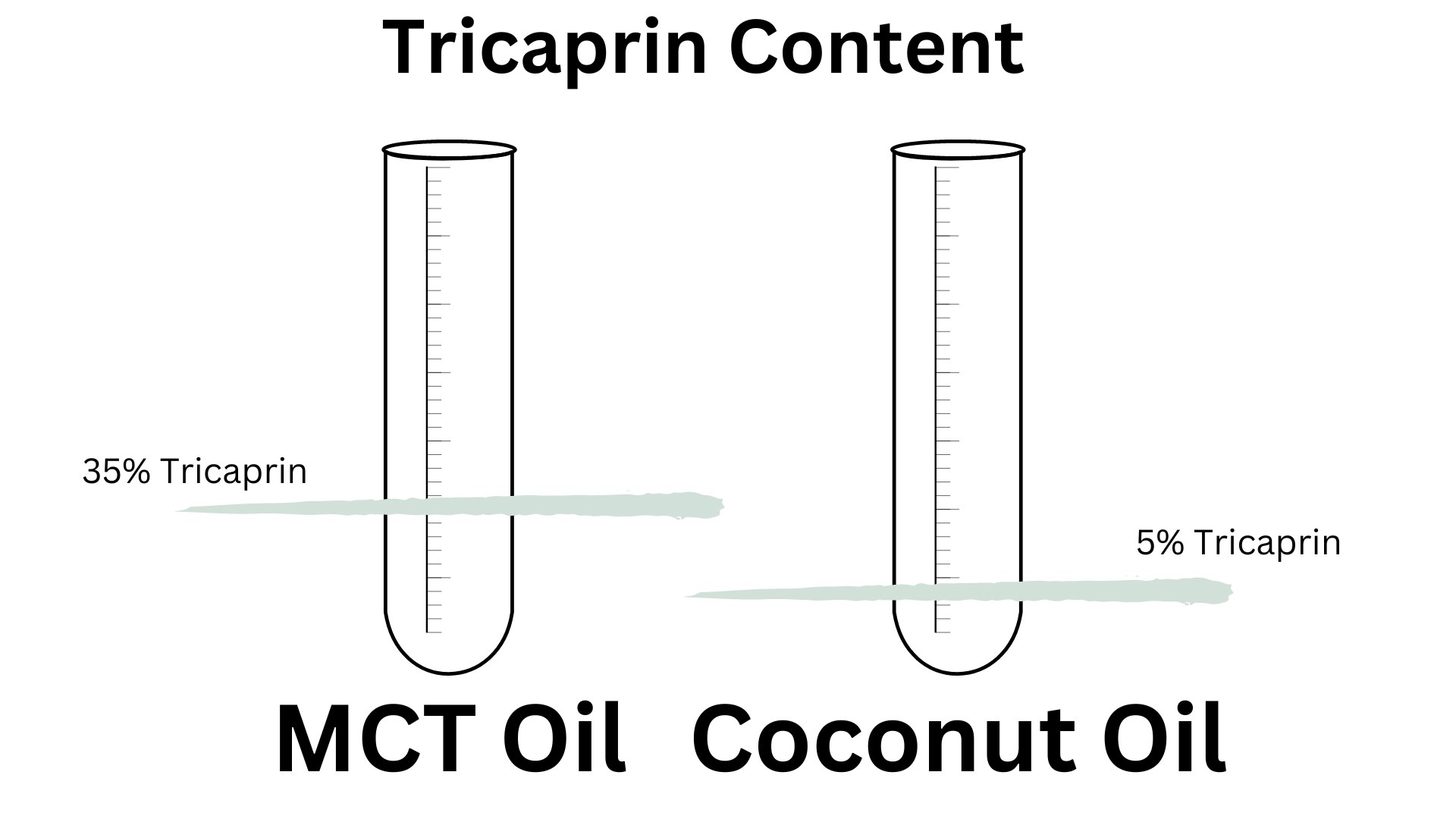Tricaprin specifically refers to a triacylglycerol in which all three fatty acids are capric acid. In other words, tricaprin is a subclass of triacylglycerols with a specific fatty acid composition.
Capric acid is a medium-chain fatty acid found in coconut oil and palm kernel oil, and is also synthesized in the human body as a by-product of the breakdown of fat.
Some recent 2023 studies in Japan prompted some mainstream media interest around Tricaprin as a potential way to reverse Coronary Artery Disease, and it was recently featured in a story by The Express.
The very limited Japanese study – titled ‘Remarkable regression of diffuse coronary atherosclerosis in patients with triglyceride deposit cardiomyovasculopathy’ – was focused on individuals who suffer from a specific type of Coronary Artery Disease called triglyceride deposit cardiomyovasculopathy (or TGCV) in which the coronary arteries are occluded by triglyceride deposits generated by the defective intracellular breakdown of triglycerides in vascular smooth muscle cells.

This is very different from classic cholesterol-induced atherosclerosis, and requires a different approach to treatment – although, individuals can suffer from both conditions simultaneously.
To support Tricaprin’s circulatory health credentials, there are other published studies that show its beneficial effects – including a very recent January 2023 study that found Tricaprin can prevent the development of abdominal aortic aneurysm (AAA) by attenuating aortic degeneration – basically meaning, Tricaprin was found to help to support the elasticity and strength of major artery walls. And just note, this study found that Tricaprin did this in a very unique way in comparison to other triaclyglycerides such as Tricaprilyn (which – like Tricaprin – is composed of three fatty acid chains connected to a glycerol backbone, except the fatty acid chains in Tricaprilyn consist of 8 carbon atoms, rather than the 10 carbon atoms possessed by the fatty acid chains in Tricaprin).
Tricaprin has only recently started to become the focus of more and more studies related to cardiovascular health, so we are in the very early stages of discovering the true potential of this triacyglycerol – but the limited number of studies that I’ve seen do look promising, if not, for now at least, just for a specific subset of individuals with very specific cardiovascular issues.
Now, onto supplementation. If you feel like you may benefit from increasing your Tricaprin intake – what’s the best way to achieve this?
Well, despite The Express defining Tricaprin as a commercially-available supplement – and this may well be the case in Japan, where the study took place – but we couldn’t find a single Tricaprin-specific supplement on the market in the UK.
In fact, there’s very little information out there about Tricaprin in general – it took quite a good amount of deep-diving and research to even make this short article.
Now, it could be that Capric Acid Triglyceride is a preferred term for Tricaprin – since this is effectively what Tricaprin is, a triglyceride consisting of exclusively Capric Acid fatty acid chains. Capric Acid Triglyceride is a common cosmetic ingredient, designed to be applied topically – and is often derived from coconut oil.
Our interpretation is that – given the recent beneficial evidence of Tricaprin, as a dietary supplement, surfacing – we’ll probably see products manufactured and labeled specifically as Tricaprin start to appear on the marketplace very soon.
But in the meantime, the most reliable way to increase your Tricaprin intake is to consume either coconut oil, or Medium Chain Triglyceride (MCT) Oil. I did some digging around on the topic, to try to find the actual percentage of Tricaprin typically found in coconut oil and MCT oils, and found that, on average, coconut oil contains around 5% Tricaprin and MCT oil contains around 35% Tricaprin – but do note it all depends on the original source of the oil, and the production methods, as to what percentage of Tricaprin you end-up with in the finished product.

Our source for these percentages was a study called ‘Tricaprylin Alone Increases Plasma Ketone Response More Than Coconut Oil or Other Medium-Chain Triglycerides: An Acute Crossover Study in Healthy Adults’ where they assessed the triaclglyceride content in these two types of oil.
So, there you have it – I hope this article gave you some more insight into what Tricaprin is, what it does, what it’s good for, and also how to increase your levels of dietary Tricaprin – in an environment where it doesn’t appear to be commercially available in its pure, verified and specifically-quantified form.
And on this point – we offer MCT oil and coconut oil testing, to determine the precise amount of Tricaprin in your chosen brand of MCT/coconut oil, alongside it’s other fatty acid content profile. Choose the ‘core ingredient’ product option during checkout and select the ‘All Other’ option in the dropdown, and you can specify exactly what oil you’d like us to test in the order confirmation process that follows.

